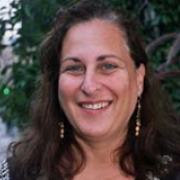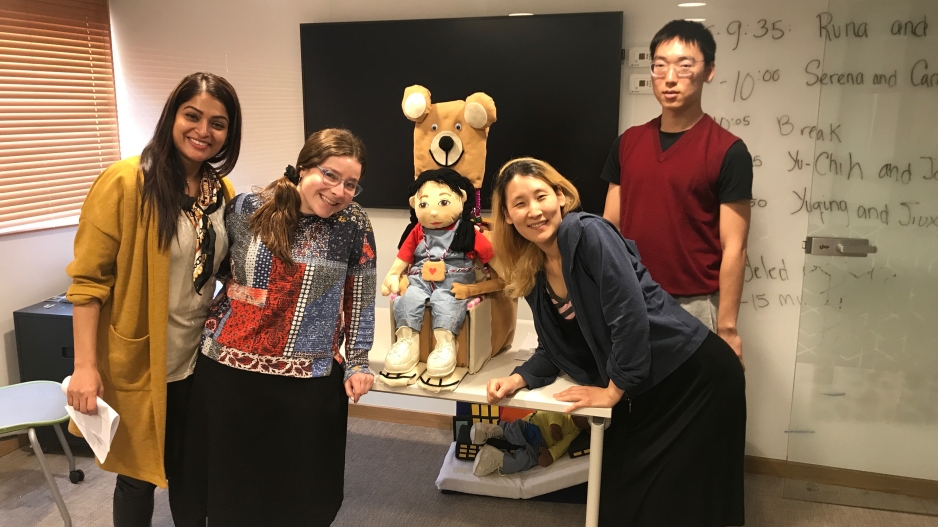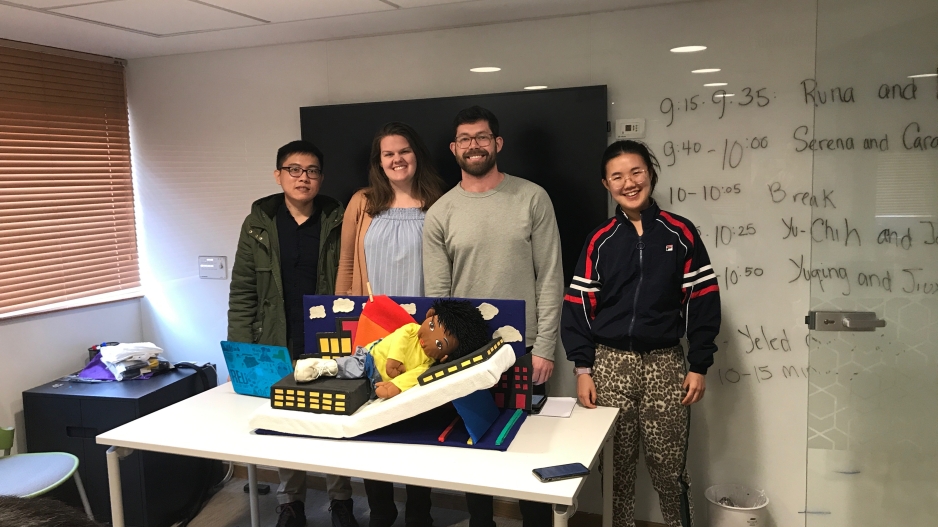Imagine a young child with a disability who is unable to sit in an upright position to feed herself. A custom seat that supported the child would help her eat independently – but imagine how much more comfortable she would feel using it if the device looked like her favorite toy?
This scenario encapsulates the goal of an interdisciplinary course NYU Steinhardt Clinical Associate Professor of Occupational Therapy Anita Perr and NYU Abu Dhabi Associate Professor of Practice of Interactive Media Michael Shiloh recently launched entitled “Israel: Developing Assistive Technologies.” Taking place in Tel Aviv, the intersession course walked students through the entire process of fabricating devices for people with disabilities—from brainstorming an initial idea to creating a product prototype—informed by both the clinical needs and preferences of users.
The inaugural group of students taking the course spanned the NYU community, representing the NYU Steinhardt Departments of Occupational Therapy, Media, Culture, and Communication, and Music and Performing Arts Professions, Tandon’s Integrated Digital Media Program, and the GSAS Ergonomics and Biomechanics Program. After touching down in Tel Aviv, students were ready to start exploring the impact of assistive technology on the participation of people with disabilities in an international and multidisciplinary environment.

The great thing about having the course in Tel Aviv is the amount of medical and rehabilitation development there and the plethora of disability-related startups. Because of the setting, we also focused on the impact that culture and religion have on technology use by people with disabilities.
The curriculum included guest lectures and site visits illustrating the design, development, and manufacturing of assistive technology, as well as conversations with users of assistive technology at rehabilitation sites and community institutions sharing their time, experience, and expertise with the group.
Bringing this knowledge back to the classroom, students practiced applying the processes involved in creating assistive technology to hypothetical patient case studies. Using cardboard and other materials, interdisciplinary student groups were able to design and develop a prototype tailored to their patient’s specific clinical needs.
“I've been teaching various forms of hands-on prototyping for over ten years – the learning advantages of actually building something compared to only reading or listening to lectures are profound,” professor Shiloh said.
Check out the following photos of students’ prototypes!

From right to left: Runa Koli, online OTD in Occupational Therapy student; Serena Shmulewitz, MS in Occupational Therapy student; Joanne Kim, GSAS MS in Ergonomics and Biomechanics student; and Jiuxin Zhu, Tandon MS in Integrated Digital Media student posing with their prototype. The group used layers of cardboard to create a custom seating system for a child in need of postural support – based on the child’s preferences and clinical needs, the prototype resembles a bear that can "hug" her to hold her upright.

From right to left: Yu-Chi Chen, post-professional MA in Occupational Therapy student; Caralyn Zeltner, MS in Occupational Therapy student; Matthew Sterling, MA in Media, Culture, and Communication student; and Yuquing Yang, MA in Music Education student. The group designed a device to help a child work on his head control and upper body movement. Based on the child’s interests, the group designed the device in a way that will make him feel like a superhero flying past skyscrapers wearing a cape.
Apply for Study Abroad
Take the next step! Learn about application requirements, upcoming info sessions, and more.
Apply Now